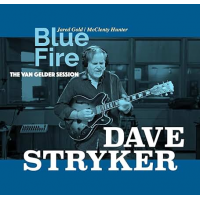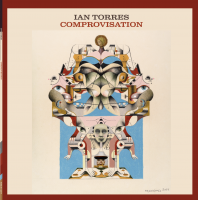Home » Jazz Articles » Album Review » Thumbscrew: The Anthony Braxton Project
Thumbscrew: The Anthony Braxton Project
Seeking scores that fired their imaginations (as well as being suited to their instrumentation), they selected music ranging from graphic scores to complex notated pieces. But given their playing and improvisational abilities, there are no obvious audible clues to the nature of the source material in their music making. Like many of their projects the music on this album was developed and recorded during a residency at City of Asylum in Pittsburgh, which no doubt contributed to the relaxed feel.
"Composition No. 52" opens the program with a start-and-stop theme reminiscent of Ornette Coleman. It has a buoyancy that is the opposite of Braxton's rather dour, intellectual reputation: typical of these performances. "Composition No.68" is a contrast: a rubato exploration of a moody, atmospheric soundscape (with some explosive passages). It also marks the debut of Fujiwara's vibraphone playing with the band, which is a major expansion of their sound. It has the effect of making it a different band: they are a chamber jazz ensemble with the vibes, a traditional guitar trio with the drums.
"Composition No.274" starts out as a kind of angular march before branching off into more abstract territory, but retains the song form by reprising the head. "Composition No. 35" leads with the vibes, with Fujiwara switching to drums halfway through (the opposite of the arrangement of No. 68) before concluding on vibes. "Composition No. 150" is the gentle ballad of the set, while "Composition No. 79" end things on a swinging note, Formanek's bass walking lines most of the way.
The most interesting look at the arranging and interpretative process has to be the three solo performances of "Composition No. 14." This surely must be one of the graphic scores, given the diversity of the performances (the brief example in the liner notes includes a geometric shape, lines, letters and numbers). Halvorson's guitar version begins with repeated notes which she bends and delays electronically, then she plays a similar gesture with chords. Eventually she creates a dense guitar ensemble before fading out to end. Fujiwara's drum version begins with low toms, building to a conversation with the cymbals. Formanek's bass version starts with low, sparse lines. He works his way up to faster rhythms and some upper register, but the mood remains sombre. The versions are all approximately the same length, but apart from some broad musical gestures in common it seems unlikely a listener could identify them as the same piece in a blindfold test. But that's the beauty of Braxton's more abstract scores: they are capable of inspiring a wide range of musical results.
Track Listing
Composition No. 52; Composition No. 157; Composition No. 14: Guitar; Composition No.68; Composition No.274; Composition No. 14: Drums; Composition No. 61; Composition No. 35; Composition No. 14: Bass; Composition No. 150; Composition No. 79.
Personnel
Additional Instrumentation
Tomas Fujiwara: vibraphone.
Album information
Title: The Anthony Braxton Project | Year Released: 2020 | Record Label: Cuneiform Records
Tags
About Thumbscrew
Instrument: Band / ensemble / orchestra
PREVIOUS / NEXT
Support All About Jazz
 All About Jazz has been a pillar of jazz since 1995, championing it as an art form and, more importantly, supporting the musicians who make it. Our enduring commitment has made "AAJ" one of the most culturally important websites of its kind, read by hundreds of thousands of fans, musicians and industry figures every month.
All About Jazz has been a pillar of jazz since 1995, championing it as an art form and, more importantly, supporting the musicians who make it. Our enduring commitment has made "AAJ" one of the most culturally important websites of its kind, read by hundreds of thousands of fans, musicians and industry figures every month.






















